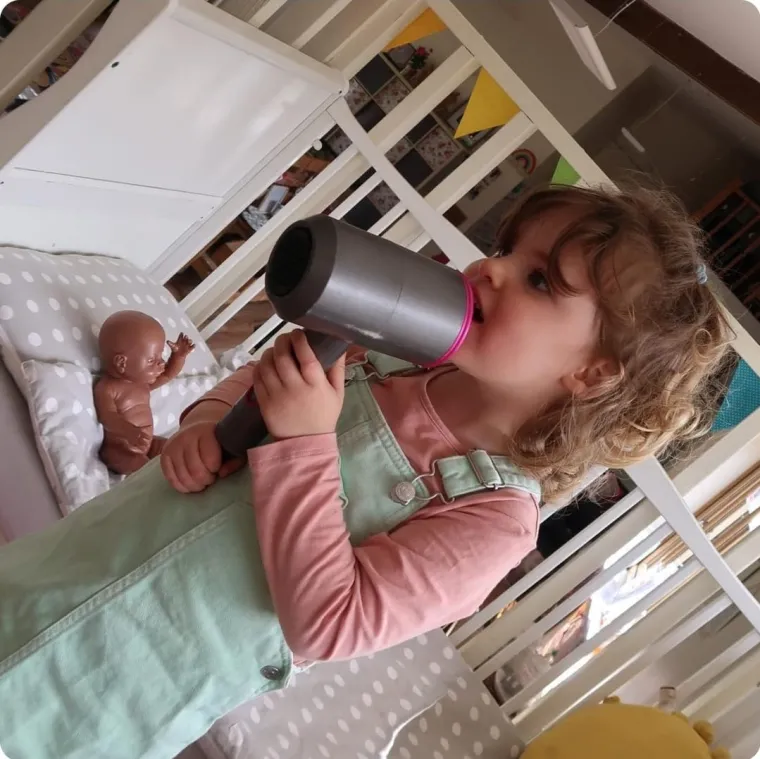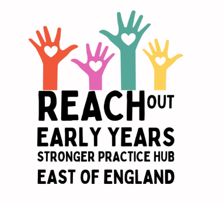
Supporting early literacy through symbolic play ~ by Lisa Walter
Lisa Walter is a member of the REACHout East of England Early Years Stronger Practice Hub, an expert on the Department for Education (DfE) Early Years COVID-19 Recovery: Expert and Mentors programme, alongside her role as Quality Practice Manager for The Barn Nursery School.
Please watch our supporting video ‘Who’ s up for a party?’
Literacy in the Early Years
Early literacy is the process by which young children learn and develop the skills required to communicate through reading and writing.
Early years practitioners are pivotal in laying the foundations to support the development of these skills. There is consistent evidence to suggest that by implementing approaches to support early literacy a child’s progress can increase on average by 4 months.
Because oral language is fundamental in the development of early literacy skills, it is paramount that approaches to support early literacy should also support communication and language.
What is symbolic play?
Symbolic play is a form of abstract thinking within imaginative play where one thing is used to represent another. This form of play is fundamental in cognitive development and laying foundations for early literacy.
“In symbolic play, young children advance upon their cognitions about people, objects and actions and in this way construct increasingly sophisticated representations of the world” (Bornstein et al, 1996).
Stages of symbolic play and how to implement and support
- Imitating and mimicking – babies begin to imitate and mimic their parents/caregivers from birth, using this as a way to initiate social interactions.
Support by imitating babies babble, gestures and action. Introduce actions such blowing raspberries and kisses. Make use of intimate 1:1 time such as nappy changing, when eye contact can be maintained.
- Gestures and expressive actions - gestures are a physical way in which a child can represent their thinking. These can be expressions of emotion as well as carrying specific meaning. Gestures also support early communication and language as well as literacy.
Support by using gestures for specific objects, actions and words, ie pretending to play a drum. Also use gestures to guide direction by pointing or gazing. Enhance children’s literacy skills by modelling movement to songs, ie stomping and clapping. Encourage children to repeat rhyme repetition and alliteration in stories, as well as dramatising and animating the text. For example, being big and bold, roaring like a dinosaur, or meek and timid, quiet like a mouse.
- Representation – children use objects to represent something else, ie a block as a mobile phone or corks in a pan as pasta. They are representing things symbolically. This supports early literacy because ‘written language is symbolic’ (The Early Years Coalition, 2021). Writing is a representation of sounds that join to form words that create shared meaning between writer and reader.
To support, create an environment rich in readily available open-ended resources such as loose parts and blocks. Engage with children by modelling representation, ie, use a box as a car or a stick as a fishing rod.
- Imaginative and role play – as children become more imaginative and creative, these build on the symbolic representation and bring together other forms of symbolic play. Children begin to bring their own experiences into their play, whether culturally or from books, games and television as children extend their possibility thinking, that is, seeing things that aren’t directly present but could be possible. For example, riding a unicorn over the rainbow. This begins to build the foundations for imaginative text creation.
